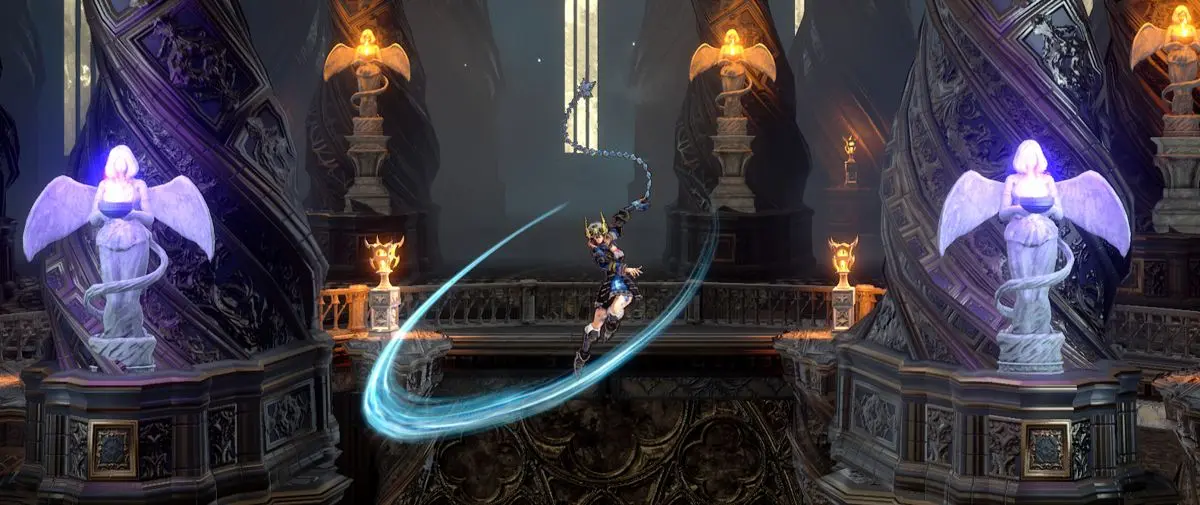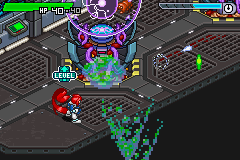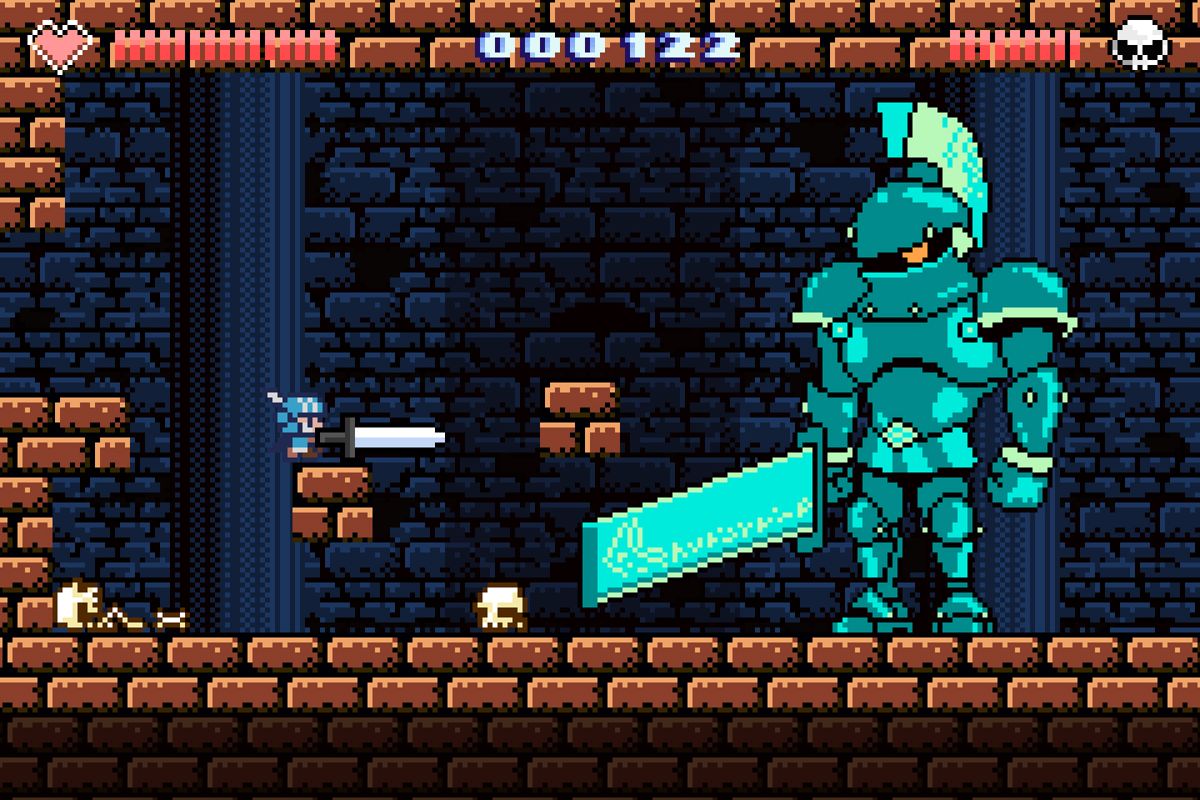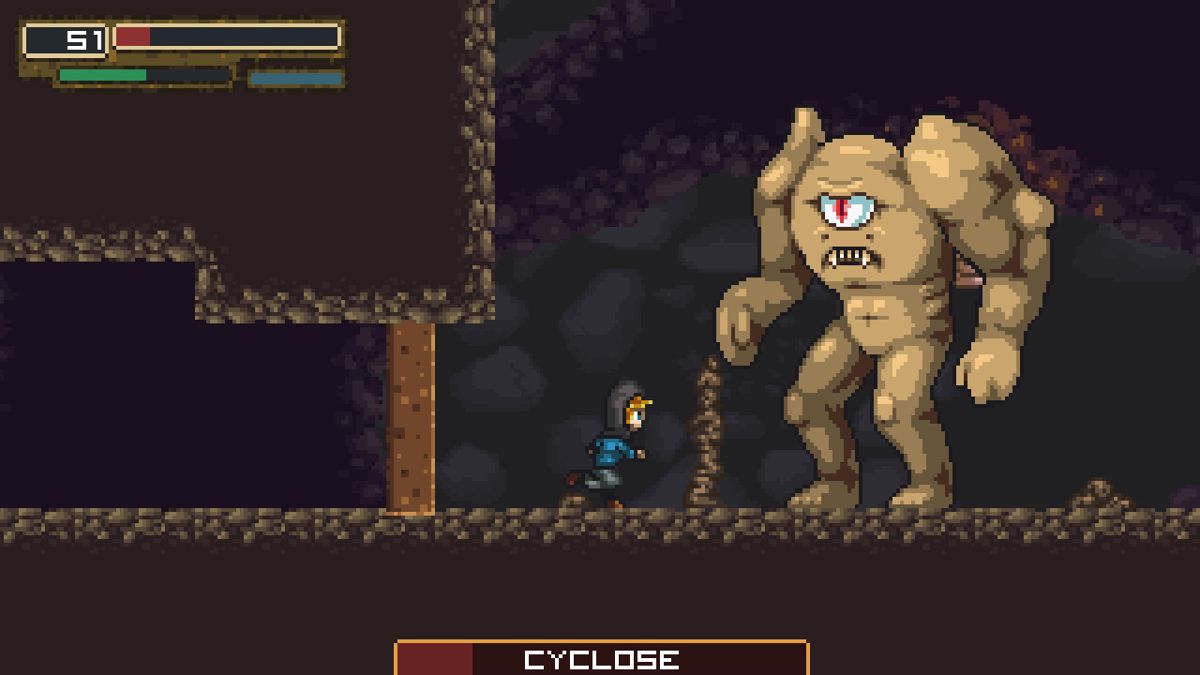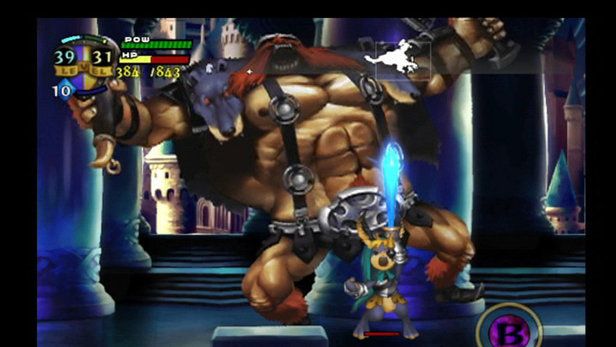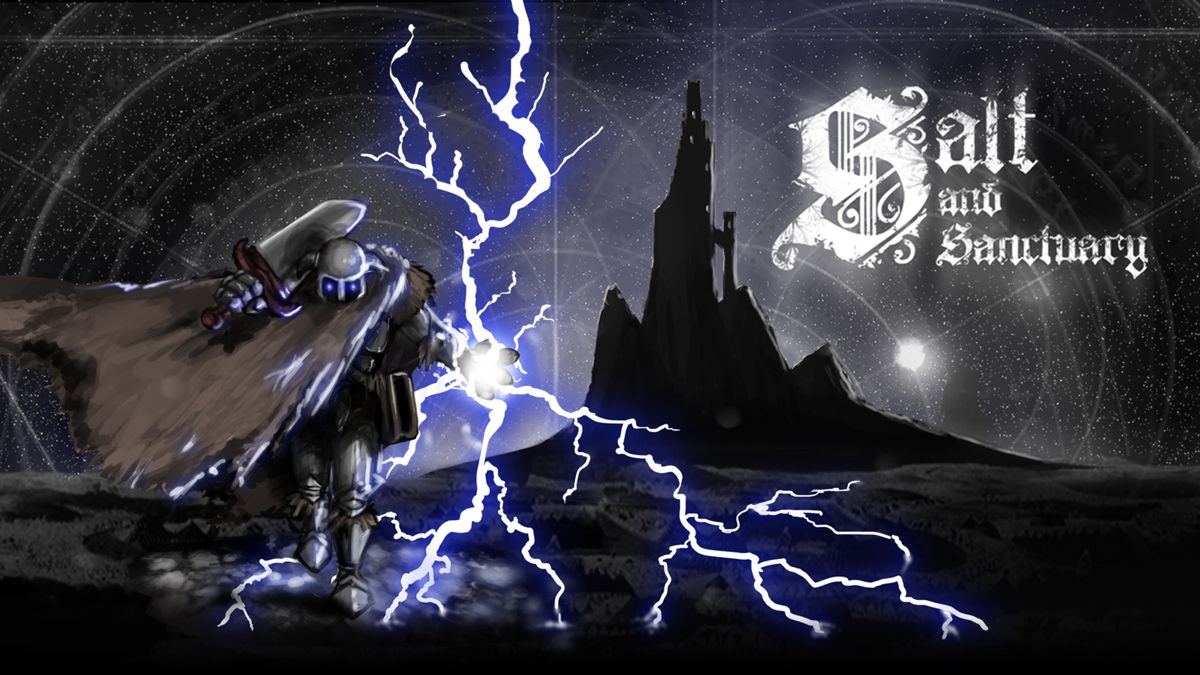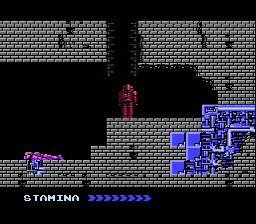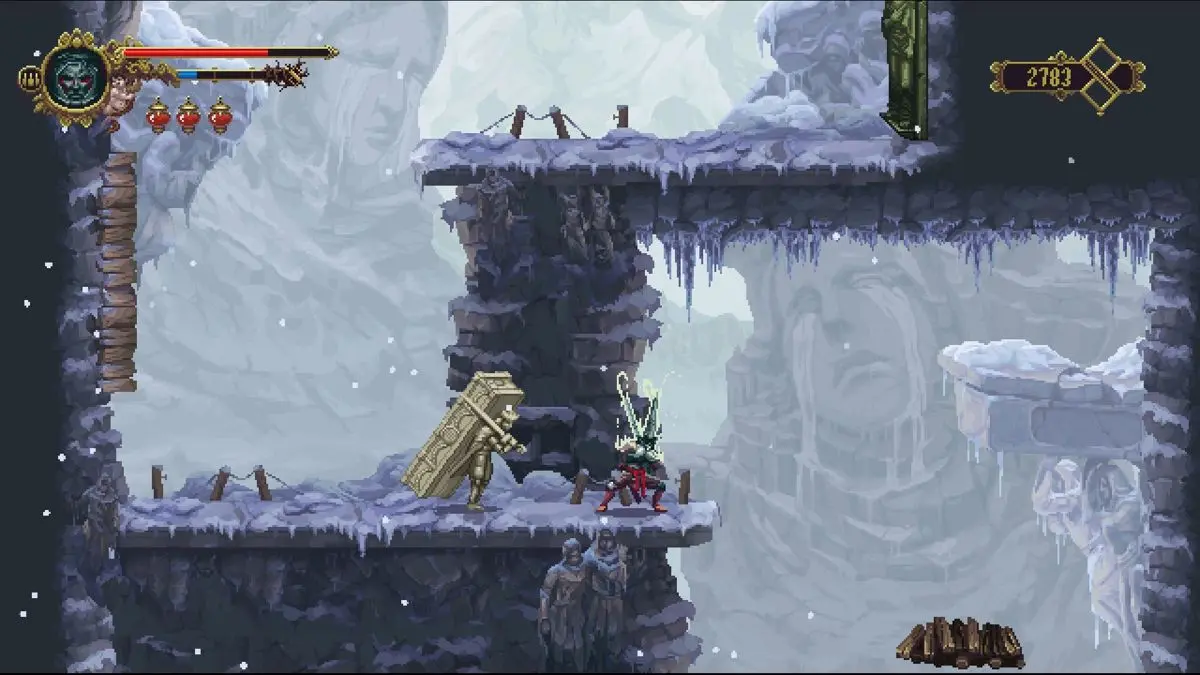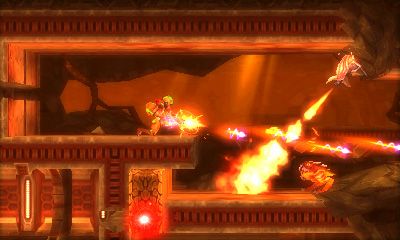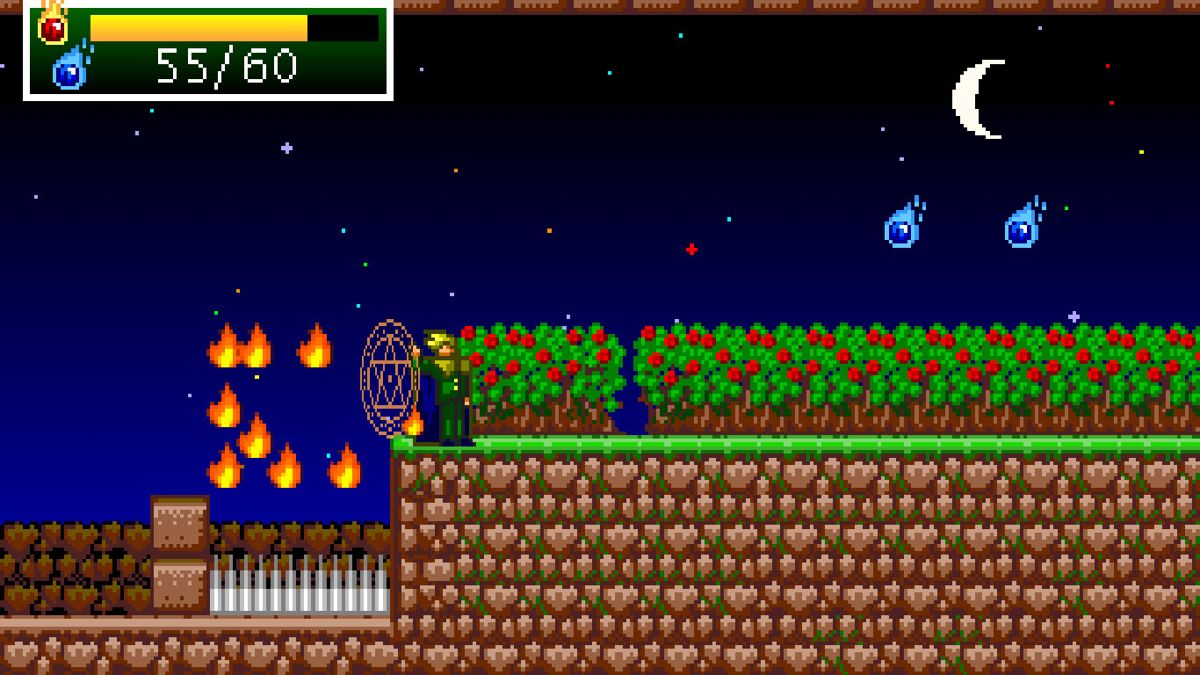Results
Bloodstained: Ritual of the Night
igavania, grindy, hidden areas
Bloodstained: Ritual of the Night is a critically acclaimed Metroidvania-style action-adventure game developed by Koji Igarashi, the godfather of the Igavania subgenre. Drawing inspiration from his work on the iconic Castlevania series, Igarashi has crafted a meticulously designed game that pays homage to the genre's roots while introducing fresh mechanics and elements. The game stands out for its intricate level design, featuring a vast and interconnected castle filled with labyrinthine passages, hidden rooms, and secret shortcuts. Exploration is rewarded with a wealth of power-ups, weapons, and equipment, allowing players to backtrack and access previously inaccessible areas in true Metroidvania fashion. Combat is a central pillar of the experience, with a diverse array of enemies that require strategic positioning and skillful use of various weapons and abilities. Bloodstained boasts a vast arsenal, including swords, spears, whips, and a variety of magical abilities, each with its own unique properties and attack patterns. One of the game's standout features is the Shard system, which allows players to equip and mix-and-match various abilities and passive bonuses, creating unique character builds tailored to their playstyle. This system adds depth and replayability, encouraging experimentation with different shard combinations. Visually, the game showcases a stunning art style, with meticulously crafted backgrounds that capture the gothic horror atmosphere. The attention to detail in the character designs and enemy animations is truly impressive, evoking a sense of nostalgia while maintaining a distinct and modern aesthetic. Overall, Bloodstained: Ritual of the Night is a must-play for fans of the Metroidvania genre, offering a challenging and rewarding experience that pays homage to its roots while introducing fresh ideas and mechanics that solidify its place as a modern classic.
Scurge: Hive
sci-fi, challenging, varied biomes
Scurge: Hive, released in 2006, is a third-person shooter game developed by Tragical and published by Kheops Studio. While it shares some standard elements with other games in the action-horror genre, Scurge: Hive sets itself apart with its distinct atmosphere and gameplay mechanics. The game takes place in a dystopian, post-apocalyptic world overrun by a mysterious alien infestation known as the "Hive." The player assumes the role of a mercenary tasked with navigating through this hostile environment, battling against hordes of grotesque, mutated creatures. One of the standout features of Scurge: Hive is its emphasis on ammo and resource management. Ammunition is scarce, forcing players to carefully plan their attacks and prioritize headshots for maximum efficiency. Additionally, the game introduces a unique "nano-forge" system, which allows players to craft and upgrade their weapons using materials scavenged from the environment. The game's level design is noteworthy, with intricate and interconnected environments that encourage exploration and backtracking. Players must navigate through claustrophobic corridors, dilapidated buildings, and underground tunnels, all while fending off relentless enemy attacks from multiple angles. Scurge: Hive's combat mechanics are intense and unforgiving. Enemies exhibit intelligent behavior, often flanking or overwhelming the player with sheer numbers. The game also features a dynamic damage system, where different body parts can be targeted and dismembered, adding a brutal layer of realism to the combat. While the game's graphics may have aged, the atmospheric design and sound design still hold up remarkably well. The eerie, industrial soundscape and unsettling ambient noises contribute to the game's overall sense of dread and tension. Despite its niche status, Scurge: Hive has garnered a dedicated cult following among fans of the action-horror genre, particularly those who appreciate its challenging gameplay, resource management elements, and uncompromising difficulty.
Castle in the Darkness
fantasy, challenging, hidden areas
Castle in the Darkness (2015) is a Metroidvania-style action-platformer developed by BEHNAVSH. While it follows the familiar formula of the genre, it distinguishes itself with its unique aesthetic and atmospheric horror elements. The game's pixelated art style is heavily inspired by the Philips Videopac+ and Atari 2600 era, with a limited color palette and chunky sprites. However, the visuals are more than just a nostalgic throwback, as they effectively contribute to the game's unsettling and eerie ambiance. The game's narrative is minimalistic, leaving much to the player's interpretation. You take on the role of a nameless protagonist who finds themselves trapped within the confines of a foreboding castle. As you explore the labyrinthine corridors and interconnected rooms, you'll uncover clues about the castle's dark history and the fate of its former inhabitants. One of the standout features of Castle in the Darkness is its emphasis on environmental storytelling. The game's world is meticulously crafted, with each area conveying a distinct atmosphere and revealing snippets of lore through carefully placed details and imagery. Combat in the game is challenging but satisfying, requiring precise timing and strategic use of your character's limited arsenal. Enemies are varied and often pose unique threats, forcing you to adapt your playstyle and approach encounters tactically. In addition to combat, the game features intricate platforming sequences and puzzles that often require backtracking and utilizing newly acquired abilities or items. This encourages exploration and rewards players who take the time to uncover the castle's hidden secrets. While Castle in the Darkness may initially seem like a straightforward retro-inspired platformer, its atmospheric horror elements, environmental storytelling, and challenging gameplay make it a standout entry in the Metroidvania genre.
Inexistence
environmental storytelling, mysterious, dark
Inexistence (2016) is a narrative-driven, first-person psychological horror game developed by Ninja Theory. Set in a surreal and ever-changing nightmare world, the game explores themes of trauma, mental illness, and the fragility of the human psyche. One of the game's standout features is its dynamic environment, which constantly shifts and distorts in response to the player's actions and emotional state. The game employs a unique "fracture" mechanic, where the very fabric of reality fractures and warps, creating unsettling and haunting scenarios that challenge the player's perception of reality. The game's narrative is non-linear and fragmented, reflecting the protagonist's fractured psyche. Players must piece together the protagonist's past and unravel the underlying mystery behind their harrowing experiences through environmental storytelling and cryptic clues scattered throughout the nightmarish landscapes. Inexistence is renowned for its atmospheric sound design and haunting score, which heighten the sense of dread and unease. The game's visual style is a blend of photorealistic and surreal elements, creating a disorienting and oppressive atmosphere that keeps players on edge. One of the game's most distinctive features is its lack of traditional combat mechanics. Instead, players must navigate the ever-changing environments and confront their deepest fears through exploration, puzzle-solving, and careful observation of their surroundings. Inexistence received critical acclaim for its innovative approach to storytelling, immersive atmospheric design, and thought-provoking exploration of mental health themes. However, some critics noted that its abstract nature and lack of clear objectives could be off-putting for players seeking a more traditional narrative experience.
Odin Sphere
fantasy, grindy, challenging
Odin Sphere, released in 2007 for the PlayStation 2, is a beautiful side-scrolling action RPG developed by Vanillaware. Known for its stunning hand-drawn visuals and intricate character designs, the game stands out with its captivating art style inspired by classical Norse mythology. The game's narrative is presented through the perspectives of five protagonists, each with their own unique storyline and motivations. These intertwining tales unfold in a non-linear fashion, allowing players to experience the overarching conflict from different angles. The storytelling is rich and emotionally resonant, exploring themes of sacrifice, love, and the consequences of one's actions. Combat in Odin Sphere is a highlight, featuring a unique and satisfying combat system that combines hack-and-slash elements with RPG mechanics. Players can unleash devastating combos and special attacks by carefully managing their Psyche Meter, which governs the use of powerful skills and transformations. Enemy encounters are varied and challenging, requiring strategic thinking and precise timing. One of the game's standout features is its intricate web of cause and effect. Decisions made in one character's storyline can have far-reaching consequences in another's, creating a sense of interconnectedness and encouraging multiple playthroughs to uncover the full scope of the narrative. While the gameplay is engaging, it's the game's visual artistry that truly sets it apart. Vanillaware's painstaking attention to detail is evident in every frame, with lush environments, intricate character designs, and fluid animations that bring the world to life. The game's aesthetics are further complemented by an enchanting soundtrack that perfectly captures the mythological atmosphere. Overall, Odin Sphere is a unique and captivating experience, blending masterful storytelling, engaging gameplay, and breathtaking visuals into an unforgettable journey through a world steeped in Norse mythology.
Salt and Sanctuary
platformer, low fantasy, high fantasy
Salt and Sanctuary is a challenging 2D action-platformer with a deep, interconnected world and Souls-like combat. Players must navigate a mysterious, hand-drawn world, overcome treacherous foes, and uncover the secrets of a forgotten land.
Relics: Ankoku Yosai
dark, melancholy, horror
Relics: Ankoku Yosai, released in 1987 for the MSX2 and later ported to other platforms, is a unique and ambitious action-adventure game that stands out in the crowded genre of its time. Developed by Nihon Falcom, the game is set in a post-apocalyptic world where humanity has been nearly wiped out by a cataclysmic event, and the player takes on the role of a lone survivor tasked with unraveling the mysteries of the past and finding a way to restore the world. One of the game's standout features is its non-linear exploration and level design. Players are free to navigate the vast, interconnected world at their own pace, with multiple paths and secrets to uncover. The game encourages backtracking and revisiting previously explored areas as new abilities and items are obtained, adding depth and replayability to the experience. The combat system in Relics: Ankoku Yosai is also noteworthy. While it features traditional action-adventure combat mechanics, it also incorporates RPG elements such as character progression, equipment management, and a unique skill system. Players can learn and upgrade various abilities, allowing for strategic customization of their character's playstyle. The game's narrative is delivered through a combination of in-game events, environmental storytelling, and optional side quests and interactions. The world is rich with lore and mystery, and players are encouraged to piece together the narrative through exploration and discovery. Additionally, Relics: Ankoku Yosai features an impressive soundtrack that complements the game's atmospheric and often haunting environments. The music shifts seamlessly between different tracks, creating a dynamic and immersive audio experience. Despite its age, Relics: Ankoku Yosai is often praised for its ambitious design, compelling storytelling, and innovative gameplay mechanics that set it apart from its contemporaries. It is considered a cult classic among fans of the action-adventure genre and a notable entry in Nihon Falcom's catalog of games.
Blasphemous
platformer, low fantasy, grindy
Blasphemous is a challenging and atmospheric 2D action-platformer set in the dark, gothic world of Orthodoxia. Players take on the role of the Penitent One, a mysterious and tormented figure, on a quest to uncover the secrets of the Miracle and put an end to the endless cycle of death and rebirth.
Metroid: Samus Returns
sci-fi, environmental puzzles, challenging
Metroid: Samus Returns is a critically acclaimed reimagining and remake of the 1991 Game Boy classic Metroid II: Return of Samus, developed by MercurySteam and Nintendo for the Nintendo 3DS. Here are some key details about the game: Gameplay and Mechanics: - Retains the 2D side-scrolling exploration and combat of classic Metroid games, but with updated mechanics and controls. - Introduces the "Melee Counter" system, allowing Samus to counterattack enemies by precisely timing her melee strikes. - Incorporates free-aim mode, allowing Samus to aim her arm cannon in any direction while standing still. - Features a revised map system with a separate map screen and the ability to place markers. Level Design and Environments: - Takes place on the planet SR388, the setting of the original Metroid II. - Reimagines and expands upon the game's environments, adding new areas and intricate level designs. - Incorporates various biomes, from lush jungle regions to treacherous caverns and depths. - Features meticulously crafted 2.5D graphics, with detailed backgrounds and foregrounds. Narrative and Storytelling: - Retells the story of Samus' mission to exterminate the Metroid species on SR388. - Expands on the narrative through cutscenes and environmental storytelling. - Introduces new AI entities, such as the Metroid-scanning robots, that shed light on the planet's history. Overall, Metroid: Samus Returns aimed to recapture the essence of classic Metroid gameplay while introducing modern refinements and enhancements, resulting in a well-received and critically acclaimed addition to the long-running series.
Porradaria 2: Pagode of the Night
challenging, interconnected world, varied biomes
Porradaria 2: Pagode of the Night is a satirical hack and slash game developed by the Brazilian studio Butcher Games. It takes place in a fictionalized version of São Paulo, where the player assumes the role of Raul Snitcher, a disgraced former police officer seeking redemption and vengeance. The game's combat system is a mix of intense melee action and strategic positioning, requiring players to manage Raul's stamina and special abilities carefully. The enemies range from common street thugs to corrupt officials and even supernatural beings, each with their own unique attack patterns and weaknesses to exploit. What sets Porradaria 2 apart is its uncompromising portrayal of Brazilian urban life, tackling sensitive topics such as police brutality, corruption, and societal inequality with a darkly humorous tone. The game's dialogue is filled with regional slang and cultural references, adding an extra layer of authenticity and immersion for Brazilian players. The game's soundtrack, composed by renowned Brazilian artists, blends traditional pagode and samba rhythms with heavy metal influences, creating a unique and atmospheric backdrop for the intense action sequences. Porradaria 2 also features a branching narrative with multiple endings, allowing players to shape Raul's journey and the ultimate fate of São Paulo based on their choices throughout the game.
Filters
Search Term
Properties
Platforms
Tags (include)
Tags (exclude)
Get Your Game Noticed
Advertise your game with MetroidvaniaDB and reach a community of people who know exactly what they're looking for:
Your game.
Native & Banner Ad Spots
Multi-week Discounts
Game Launch Packages
Discounts for Indie Developers

